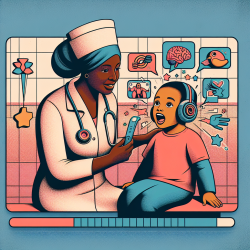Introduction
The intersectionality of race, gender, and immigration is a critical framework for understanding the multifaceted experiences of African women in the nursing profession in the United States. This framework, derived from the research article titled "The Intersectionality of Race and Trajectories of African Women into the Nursing Career in the United States," offers valuable insights that can be applied to the field of speech language pathology, particularly in creating better outcomes for children.
Understanding Intersectionality
Intersectionality is a concept that explores how different forms of discrimination and identity categories, such as race, gender, and immigrant status, intersect to create unique experiences of marginalization. In the context of African women in nursing, intersectionality highlights how these women navigate their professional lives amidst systemic discrimination and biases.
Applying Intersectionality in Speech Language Pathology
Speech language pathologists can leverage the insights from intersectionality to enhance their practice, particularly when working with children from diverse backgrounds. Here are some strategies:
- Individualized Assessment: Understand the unique cultural and linguistic backgrounds of each child. This can help tailor assessments and interventions that are culturally and linguistically appropriate.
- Advocacy and Empowerment: Advocate for children and families who may face systemic barriers due to their race, immigrant status, or language proficiency. Empower them by providing resources and support to navigate these challenges.
- Collaborative Practices: Work collaboratively with families, educators, and other professionals to create a supportive network that acknowledges and addresses the intersectional challenges faced by children.
Encouraging Further Research
The research on intersectionality and African women in nursing underscores the importance of qualitative data in capturing the nuanced experiences of marginalized groups. Speech language pathologists are encouraged to engage in or support further research that explores the intersectionality of race, gender, and immigrant status in the context of child development and therapy outcomes.
Conclusion
By integrating the principles of intersectionality into speech language pathology, practitioners can improve their understanding of the diverse challenges faced by children and their families. This approach not only enhances therapeutic outcomes but also contributes to a more equitable and inclusive practice.
To read the original research paper, please follow this link: The Intersectionality of Race and Trajectories of African Women into the Nursing Career in the United States.










